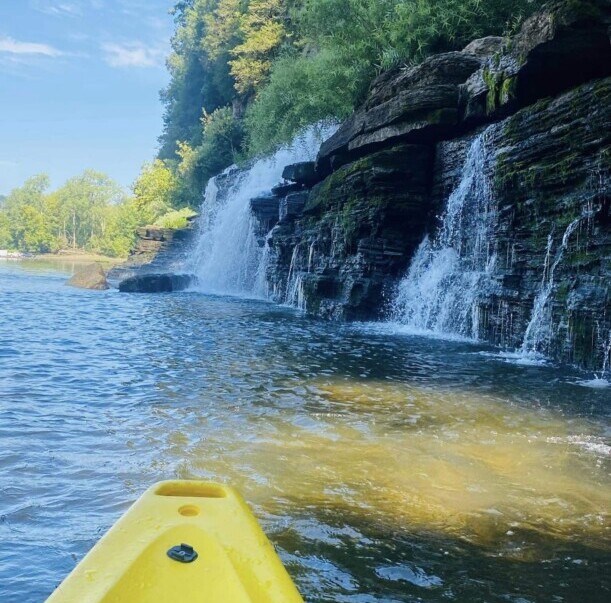
Caney Fork River History
Early life around the Caney Fork river was difficult: The river was much different then than it is now. Many of those who lived near the river would cut down trees to make rafts so they could float down the river with goods to sell in Nashville. Because they were exposed to all the elements, many didn’t survive the trip. Once they arrived in Nashville, they would sell their goods and wood, and begin the return journey to the Caney Fork on foot.
Hundreds of these simple log rafts made that treacherous journey to the log mills of Nashville. With the completion of the Center Hill Dam in December 1949, rafts and boats were no longer able to make the long journey from Rock Island to the Cumberland River. However, you can still experience the many sights of the Caney Fork River by canoe or kayak.



An eye for pearls
History states that in 1882, two boys went fishing in the Caney Fork River and pulled out some mussels to use as bait. According to an old newspaper account, when they opened the mussel, a beautiful, white pearl fell out. With the discovery of pearls in the river, Smithville became a leader in the fresh water pearl market from 1885 to 1915, with some pearls bringing in over $1,000. The most valuable pearl ever sold went for $2,000 (roughly the equivalent of $41,000 today)! It was bought by a pearl trader who then resold the pearl to Alice Longworth, daughter of President Theodore Roosevelt.
Despite being profitable, pearling requires a considerable amount of time and work. Often hundreds of mussels need to be gathered and pried open before a single pearl is found. Tennessee river pearls, however, are among the most beautiful and durable in the world. They were designated an official state gem in 1979.
The following passage was taken from the Tennessee Blue Book:
The Caney Fork in Middle Tennessee was noted for its pearl-bearing mussels, and “pearling” was a favorite sport on Sunday afternoons at the turn of the century. After World War I, dams were built on many of the rivers, and the mussels lost their swift and shallow shoals. Also, the waters became more toxic and pearling became unprofitable. But, Tennessee river pearls are among the most beautiful and durable in the world. It was designated as an official state gem in 1979.”

Great Family Fun, all Season Long. Limited Availability!

Our Location
Directions
1 Mile Off I-40 Exit 273
17055 Smithville Hwy Silver Point, TN 38582 USA 1-800-579-7893




